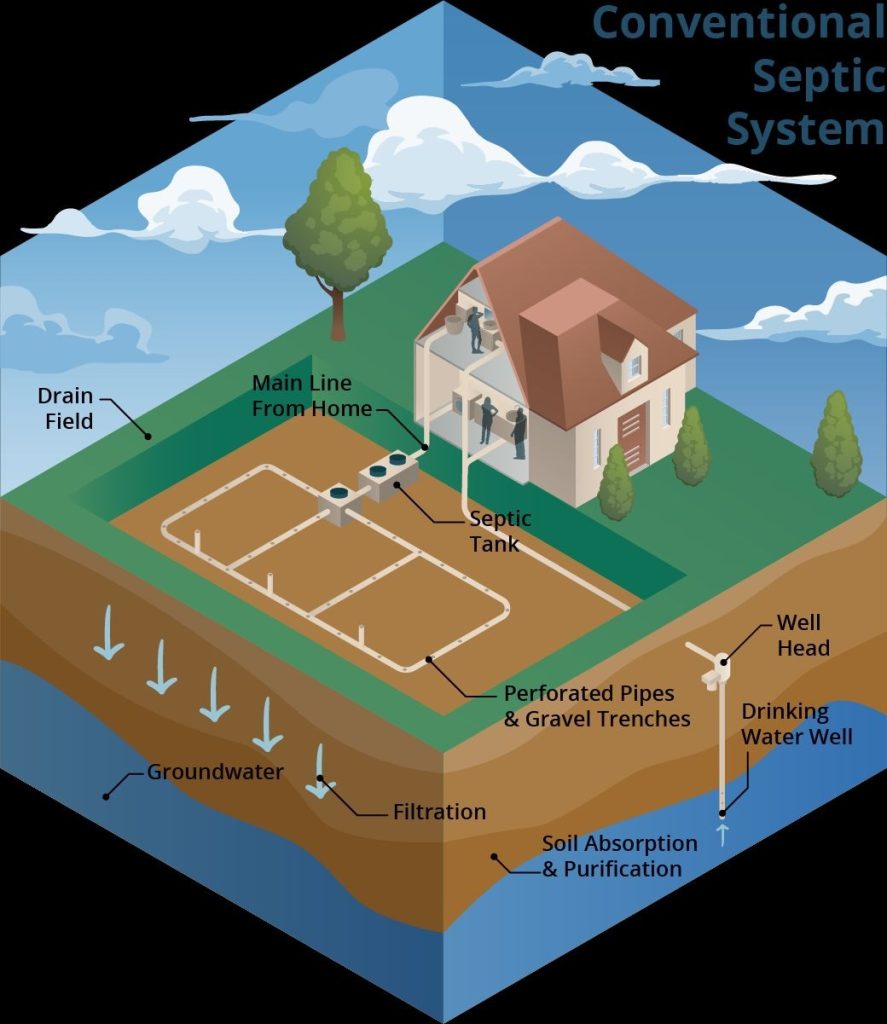The Florida Department of Environmental Protection estimates the state has more than 2 million septic systems. If an owner does not properly maintain one, it poses an environmental threat to the state’s drinking water. Besides regular maintenance, managing the impacts of flooding and groundwater rise are two more issues owners must address. A new UF/IFAS publication explains the effects these two phenomena have on septic systems.
Dr. Mary Lusk, assistant professor of urban soil and water quality in the UF/IFAS department of soil, water, and ecosystem sciences, authored the publication. She says the information is primarily for homeowners or renters who rely on a septic system, but it is just as valuable for government planners and decision makers.
“When you think of a septic system as a small, onsite wastewater treatment plant, you realize how serious its job is,” Lusk explains. “It collects everything you flush down the toilet, pour down the sink, shower, and bathtub as well as the washing machine and dishwasher. The septic system has to process all that, which includes harmful chemicals and disease-causing pathogens.”

(Credit: UF/IFAS GCREC Urban Soil and Water Quality Lab)
Even vigilant property owners who follow all the guidelines for proper septic-system care cannot predict environmental factors. Heavy rains from frequent storms or a hurricane and rising groundwater levels can saturate the soil in your yard. This prevents the septic system’s drain field from working the right way.
“Septic systems must be placed in non-waterlogged soils and have sufficient space between the bottom of the drain field and the groundwater surface,” Lusk noted. “That’s typically at least 60 centimeters, or about 2 feet, to adequately remove pollutants and pathogens from wastewater.”
Recommendations
What should the owner of a septic system do when their property floods? Lusk has several key recommendations in the publication when dealing with flooding and a septic system, including:
- Reduce your water use until flood waters recede.
- Avoid using heavy equipment over drain fields.
- Do not open or pump septic tanks during saturated soil conditions.
“If you also have a drinking water well on your property, the flooding has likely caused contamination, so you should call your county health department about having the water tested,” Lusk added.
As for rising groundwater, regular inspections and monitoring are crucial to prevent septic system inefficiency. This is especially true for coastal residents and areas prone to sea-level rise due to climate change.
“Climate change resilience calls for collaboration between homeowners, professionals, and local governments in septic system management,” she said. “I hope this publication, with additional UF/IFAS information included in it, will help those impacted.”
 4
4
